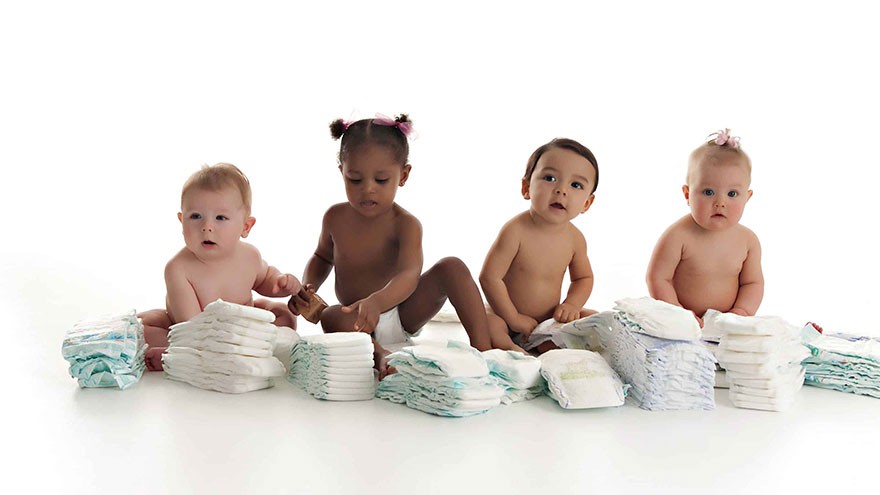What Affects a Diaper’s Absorbency?
The selection of diapers facing new parents is potentially overwhelming, with brands containing varying levels of absorbency. There are multiple brands and different quality levels of disposable diapers, but reusable diapers also offer a dizzying array of choices.
Newborns use approximately 10 diapers each day, so it is important to find a diaper that fits your child’s absorbency needs.

Cloth
Cloth diapers have improved significantly over the years, and differences in materials, manufacturer, price and design affect absorbency. Cloth diapers tend to be less absorbent than disposable diapers because they do not wick away moisture as easily as disposables.
Consumer Reports suggests using a cloth insert made for reusable diaper covers to help increase absorbency. KidsHealth.org reports cloth diaper accessories such as liners can also help increase absorbency.
Disposable
According to the Healthy Children website, disposable diapers contain an inner core filled with ultra-absorbent polymers and sterilized wood pulp. An outer covering also helps control and absorb moisture.
Some manufacturers market disposables specially designed for use in a pool, or pull-up versions designed to help children with potty training, with varying levels of absorption depending on their targeted use.
A clinical study published in the Journal of the American Academy of Dermatology discovered disposable diapers significantly improved absorbency over cloth diapers due to absorbent gelling materials commonly used in disposable diapers.
Quality
According to a Consumer Reports, differences in brand and design will affect diaper absorbency and quality.
Disposable diapers designed for overnight use will generally be more absorbent than other disposable diapers, although a higher quality “general-purpose” diaper might offer more absorbency than a less expensive or lower quality version of a diaper marketed for overnight use.
Length of Wear, Purpose and Fit
All diapers will begin to lose absorbency over time, no matter the quality or type of diaper. Some children may experience wetness overnight or during nap time, as prolonged wetness can weaken diaper absorbency.
According to study published on the website for the National Center for Biotechnology Information, regular disposable diapers are usually more absorbent than pull-up versions, particularly for overnight use.
Pull-up versions are less absorbent than traditional disposable diapers to help potty-training children to learn to recognize wetness.
You Might Also Like : How to Assemble a Layette
Check out the video version of this article on YouTube

